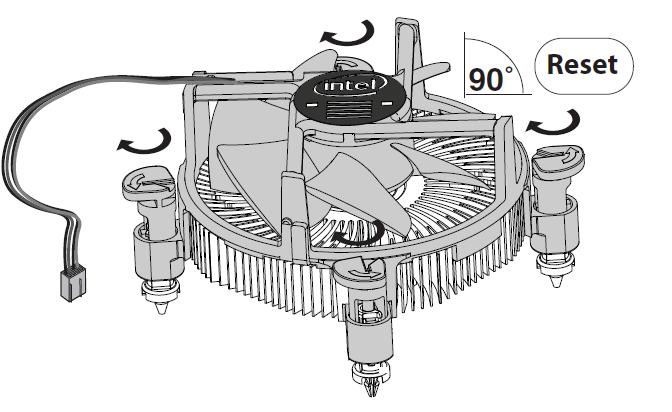I just bought myself a used i7-4790K recently, it was a nice upgrade from my extremely old i7-930. Went from 2.8Ghz to 4.0 Ghz base core speed but I'm starting to regret it. Just working on a video editing software that brings all 4 cores usage to max when transcoding, it very quickly brings my CPU TEMP a little over 90 degrees celcius in a matter of a few seconds. It stays stable at 90-93.
What I don't get is why my CPU FAN never goes above 2000 rpm, which is a very low speed based on the ZERO sound it makes at that speed yet when I'm booting my computer, for just a couple seconds, my CPU FAN goes insanely fast to the point of generating a lot of noise but just a couple seconds. So I know that the fan is capable of reaching a very fast speed but it actually never does. Even in the BIOS, when I select MAX SPEED, the fan's max speed caps at 2000 rpm, very low speed if you ask me, given that it makes zero sound. I just don't get it. How come my fan never decides to give me this INSANE speed THAT I NEED to cool down my CPU???So frustrating!!!
My fan tells me every time I boot that it's capable of spinning insanely fast like it's showing off all it's capabilities yet it will let my CPU die and never trigger that speed when IT IS REALLY NEEDED. Talk about bad engineering? My motherboard is a MSI H97 GUARD-PRO and my CPU FAN is the same type as my old i7-930, a round shaped Intel heat sink with a round fan on top. I'm a long time ASUS fan. I don't know if it's a MSI problem but it's the first time I'm not happy.
I was happy with my ASUS P6T i7-930 when even at MAX USAGE, cpu temp never went higher than 75 degrees even when overclocked! I guess I will have to check under the hood and try replacing the thermal paste but it enfuriates me, when I KNOW that my fan could speed up and fix this issue. It can speed up but it just won't.
Arrrrrgh!
What I don't get is why my CPU FAN never goes above 2000 rpm, which is a very low speed based on the ZERO sound it makes at that speed yet when I'm booting my computer, for just a couple seconds, my CPU FAN goes insanely fast to the point of generating a lot of noise but just a couple seconds. So I know that the fan is capable of reaching a very fast speed but it actually never does. Even in the BIOS, when I select MAX SPEED, the fan's max speed caps at 2000 rpm, very low speed if you ask me, given that it makes zero sound. I just don't get it. How come my fan never decides to give me this INSANE speed THAT I NEED to cool down my CPU???So frustrating!!!
My fan tells me every time I boot that it's capable of spinning insanely fast like it's showing off all it's capabilities yet it will let my CPU die and never trigger that speed when IT IS REALLY NEEDED. Talk about bad engineering? My motherboard is a MSI H97 GUARD-PRO and my CPU FAN is the same type as my old i7-930, a round shaped Intel heat sink with a round fan on top. I'm a long time ASUS fan. I don't know if it's a MSI problem but it's the first time I'm not happy.
I was happy with my ASUS P6T i7-930 when even at MAX USAGE, cpu temp never went higher than 75 degrees even when overclocked! I guess I will have to check under the hood and try replacing the thermal paste but it enfuriates me, when I KNOW that my fan could speed up and fix this issue. It can speed up but it just won't.
Arrrrrgh!
Last edited by a moderator:








